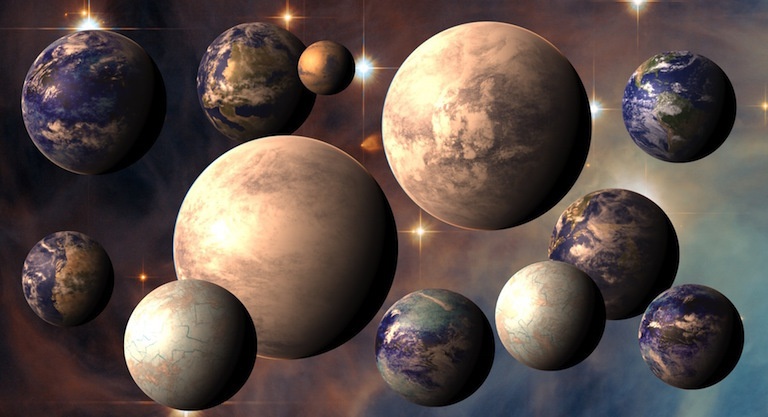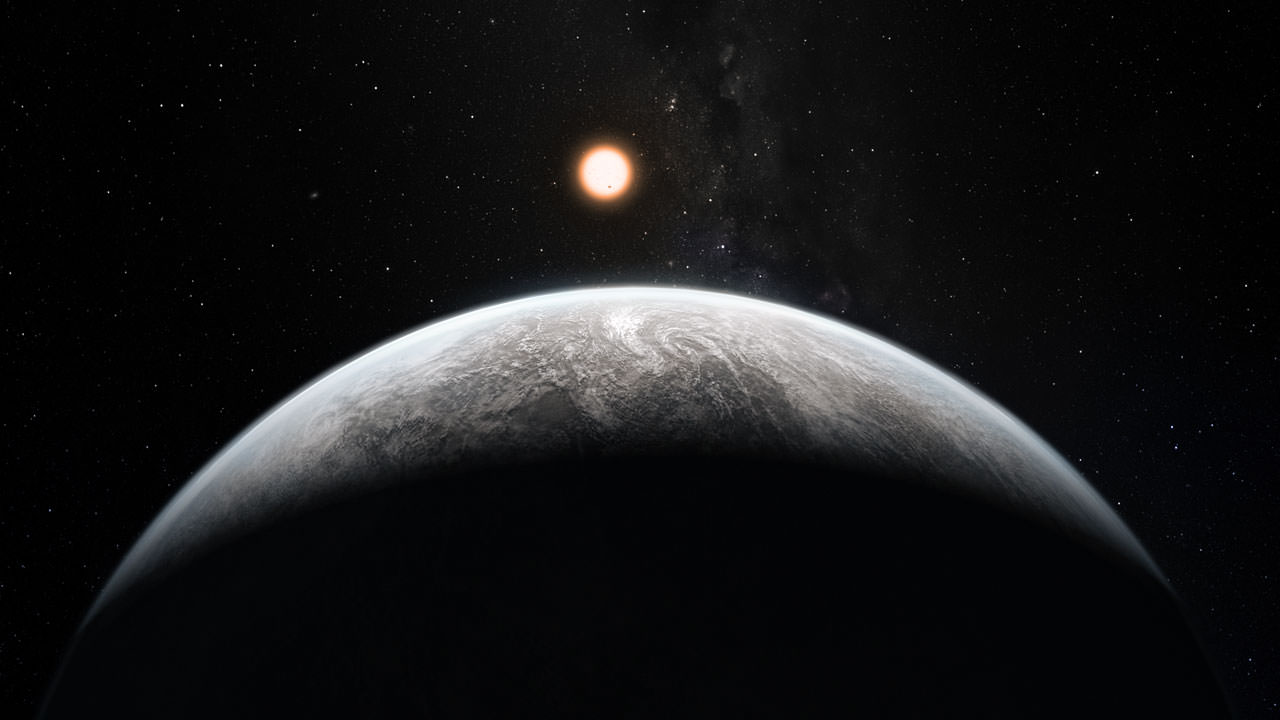Exoplanets have been a particularly hot topic of late. More than 4000 of them have been discovered since the first in 1995. Now one more can potentially be added to the list. This one is orbiting Gliese 3470, a red dwarf star located in the constellation Cancer. What makes this discovery particularly interesting is that this planet wasn’t discovered by any professional astronomers using high tech equipment like the Kepler Space Telescope. It was found entirely by amateurs.
Continue reading “Saturn-sized Planet Found in the Habitable Zone of Another Star. The First Planet Completely Discovered by Amateur Astronomers”Five Snapshots of how the Earth Looked at Key Points in its History Could Help us Find Habitable Exoplanets
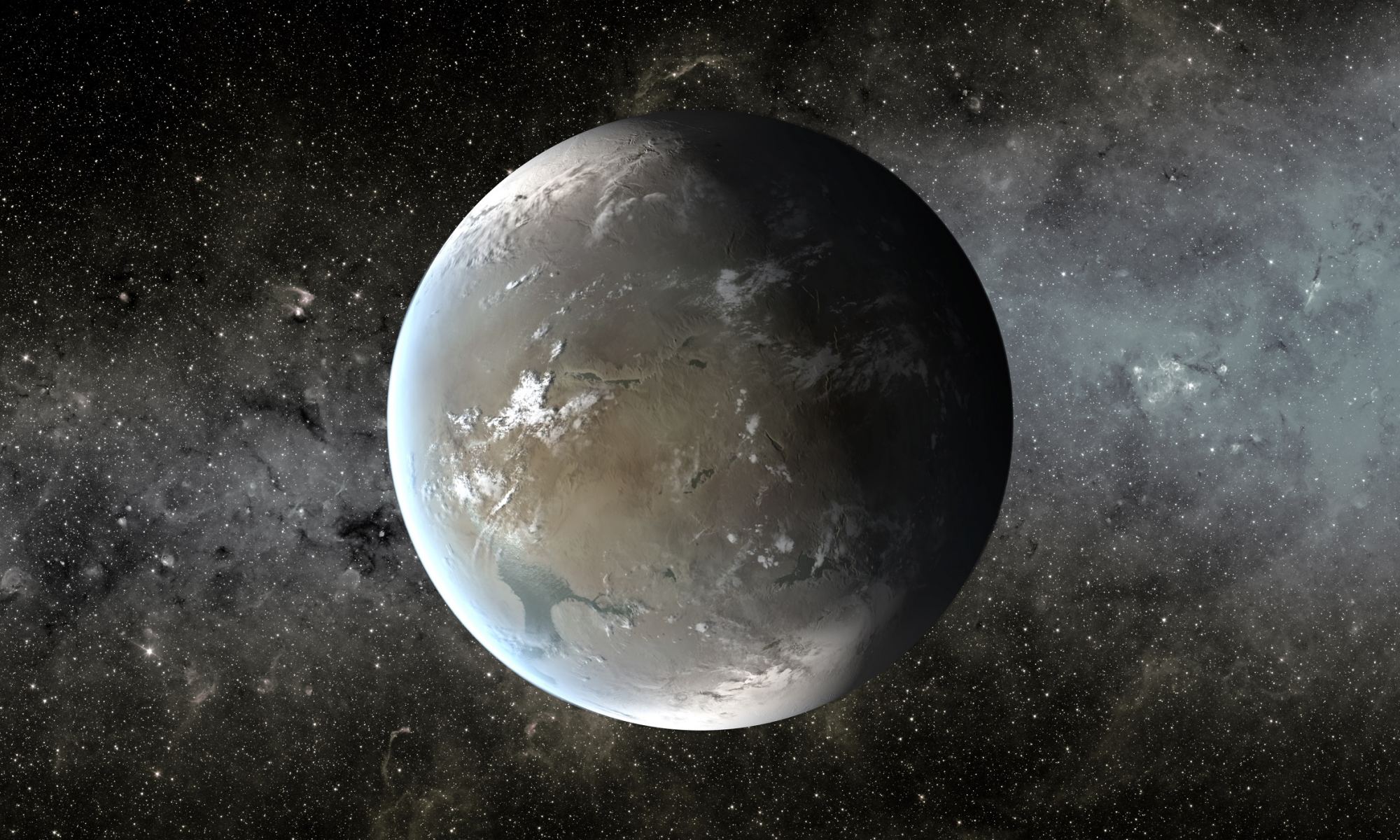
In the past few decades, astronomers have confirmed the existence of thousands of planets beyond our Solar System. Over time, the process has shifted from discovery to characterization in the hopes of finding which of these planets are capable of supporting life. For the time being, these methods are indirect in nature, which means that astronomers can only infer if a planet is inhabitable based on how closely it resembles Earth.
To aid in the hunt for “potentially habitable” exoplanets, a team of Cornell researchers recently created five models that represent key points in Earth’s evolution. These “snapshots” of what Earth looked like during various geological epochs could greatly enhance the search for extra-terrestrial life by providing a more complete picture of what a life-bearing planet could look like.
Continue reading “Five Snapshots of how the Earth Looked at Key Points in its History Could Help us Find Habitable Exoplanets”TESS Finds its First Earth-Sized World in the Habitable Zone of a Star
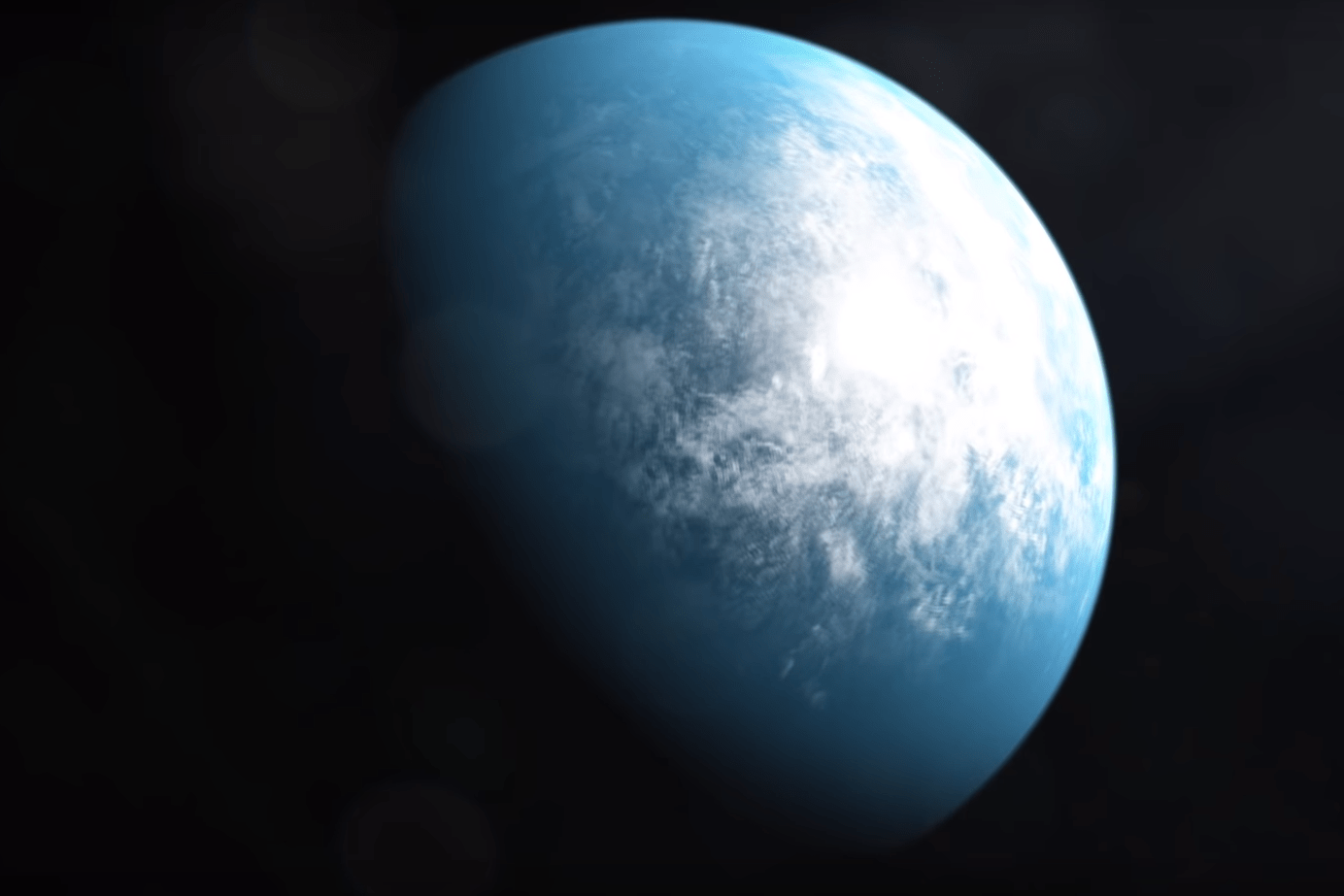
NASA’s TESS (Transiting Exoplanet Survey Satellite) has found its first Earth-sized planet located in the habitable zone of its host star. The find was confirmed with the Spitzer Space Telescope. This planet is one of only a few Earth-sized worlds ever found in a habitable zone.
Continue reading “TESS Finds its First Earth-Sized World in the Habitable Zone of a Star”Without a Magnetosphere, Planets Orbiting Flare Stars Don’t Stand a Chance
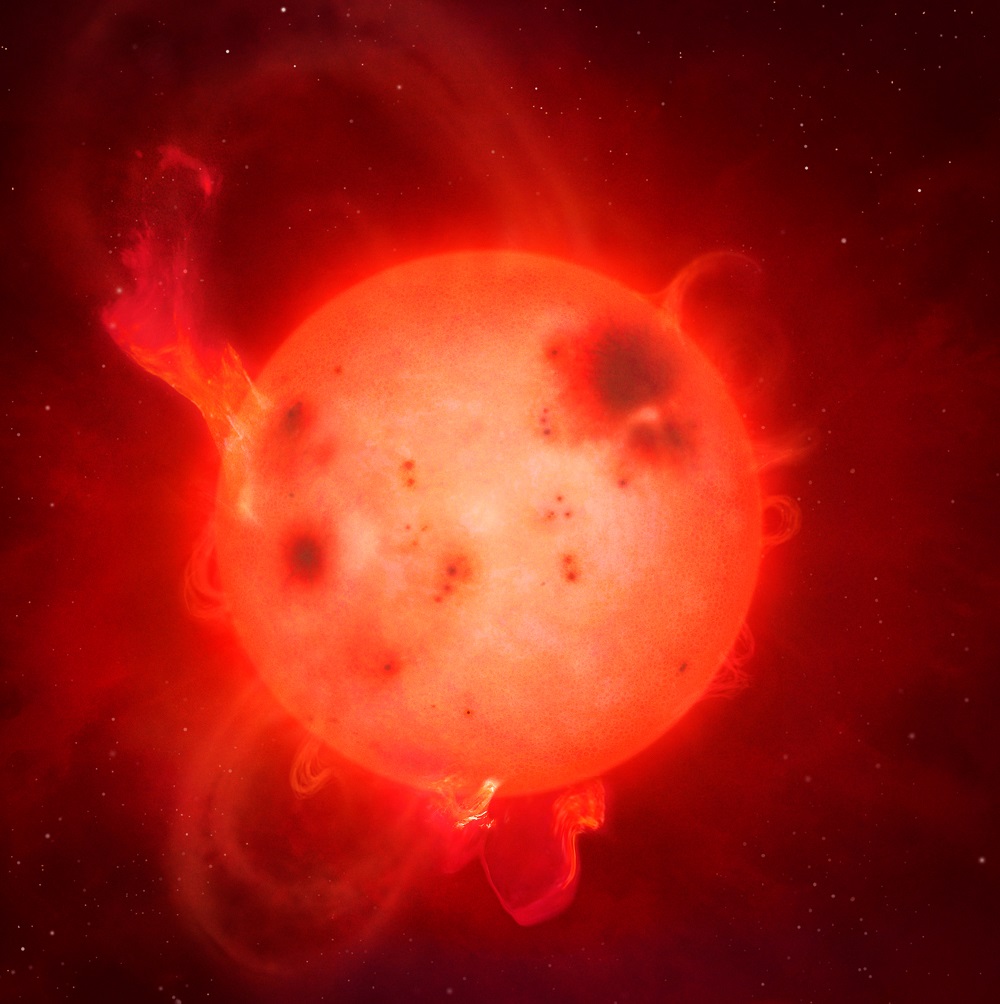
Earthlings are fortunate. Our planet has a robust magnetic shield. Without out magnetosphere, the Sun’s radiation would’ve probably ended life on Earth before it even got going. And our Sun is rather tame, in stellar terms.
What’s it like for exoplanets orbiting more active stars?
Continue reading “Without a Magnetosphere, Planets Orbiting Flare Stars Don’t Stand a Chance”Giant Meteor Impacts Might Have Triggered Early Earth’s Plate Tectonics

Plate tectonics have played a vital role in the geological evolution of our planet. In addition, many scientists believe that Earth’s geologically activity may have played an important role in the evolution of life – and could even be essential for a planet’s habitability. For this reason, scientists have long sought to determine how and when Earth’s surface changed from molten, viscous rock to a solid crust that is constantly resurfacing.
Read moreOf the Two Stars in Alpha Centauri, One is Probably More Habitable than the Other
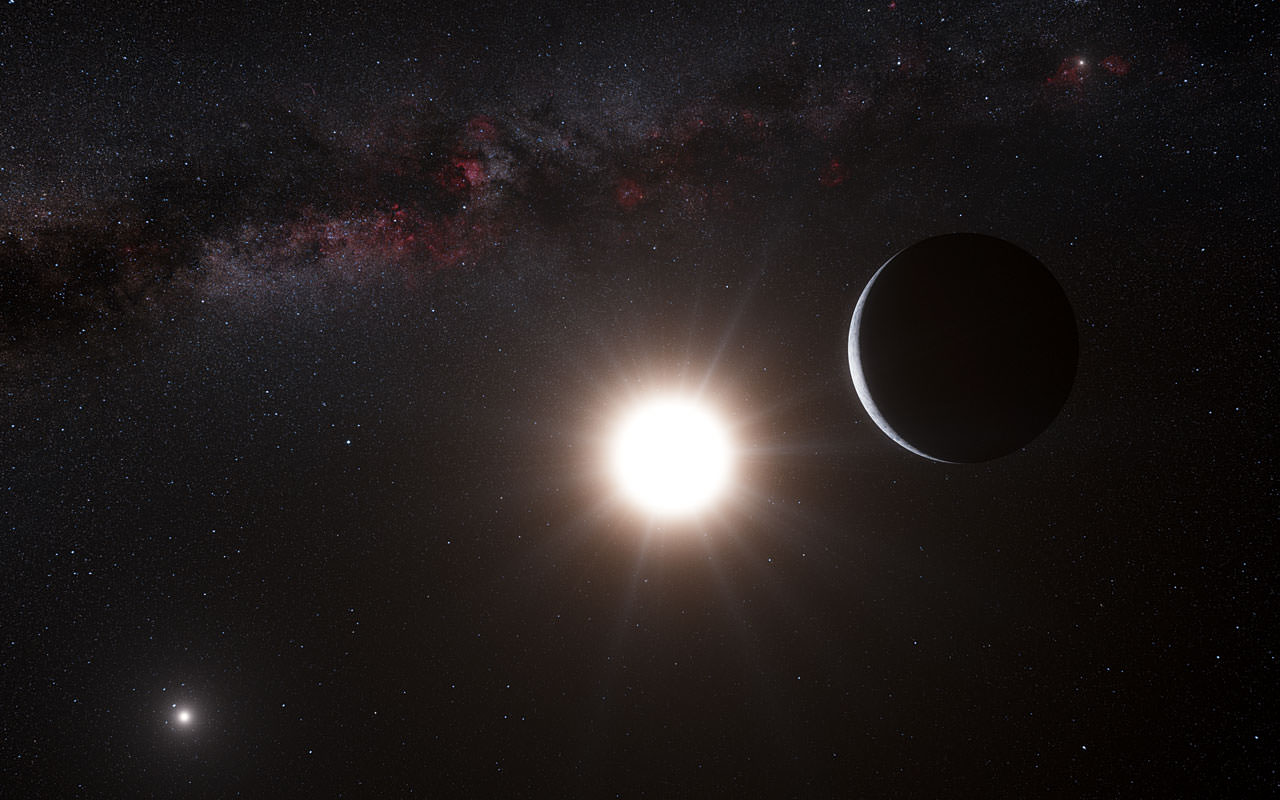
In the past, the number of known exoplanets has exploded, with 4093 confirmed detections so far (and another 4,727 candidates awaiting confirmation). With the discovery of so many planets that are dozens, hundreds, or even thousands of light years away, a great deal of attention has understandably been directed to our nearest stellar neighbors. Could planets be right next door, with the possibility of life being there as well?
While a potentially-habitable planet was recently discovered around Proxima Centauri (Proxima b), Alpha Centauri remains something of a question mark. But thanks to a recent study from the Georgia Institute of Technology (GIT), we might be getting closer to determining if this neighboring system supports life. In a twist, the study revealed that one of the stars in the binary system is more likely to be habitable than the other.
Continue reading “Of the Two Stars in Alpha Centauri, One is Probably More Habitable than the Other”Planet Sizes Matter for Habitability Too.
In order to be considered habitable, a planet needs to have liquid water. Cells, the smallest unit of life, need water to carry out their functions. For liquid water to exist, the temperature of the planet needs to be right. But how about the size of the planet?
Without sufficient mass a planet won’t have enough gravity to hold onto its water. A new study tries to understand how size affects the ability of a planet to hold onto its water, and as a result, its habitability.
Continue reading “Planet Sizes Matter for Habitability Too.”There Could be Planets Out There Which are Even More Habitable than Earth
When searching for potentially habitable exoplanets, scientists are forced to take the low-hanging fruit approach. Since Earth is the only planet we know of that is capable of supporting life, this search basically comes down to looking for planets that are “Earth-like”. But what if Earth is not the meter stick for habitability that we all tend to think it is?
That was the subject of a keynote lecture that was recently made at the Goldschmidt Geochemistry Congress, which took place from Aug. 18th to 23rd, in Barcelona, Spain. Here, a team of NASA-supported researchers explained how an examination of what goes into defining habitable zones (HZs) shows that some exoplanets may have better conditions for life to thrive than Earth itself has.
Continue reading “There Could be Planets Out There Which are Even More Habitable than Earth”Earth is an Exoplanet to Aliens. This is What They’d See
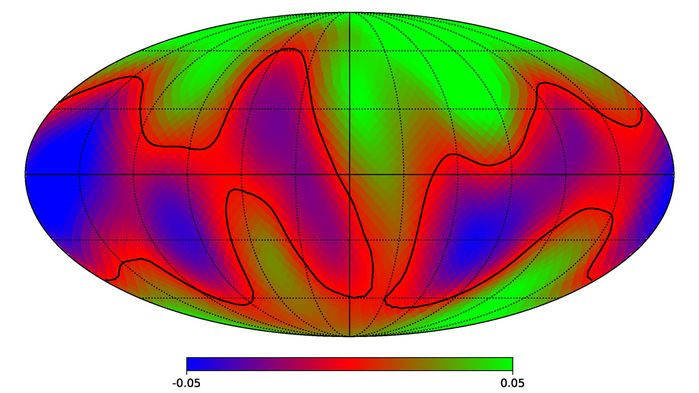
The study of exoplanets has matured considerably in the last ten years. During this time, the majority of the over 4000 exoplanets that are currently known to us were discovered. It was also during this time that the process has started to shift from the process of discovery to characterization. What’s more, next-generation instruments will allow for studies that will reveal a great deal about the surfaces and atmospheres of exoplanets.
This naturally raises the question: what would a sufficiently-advanced species see if they were studying our planet? Using multi-wavelength data of Earth, a team of Caltech scientists was able to construct a map of what Earth would look like to distant alien observers. Aside from addressing the itch of curiosity, this study could also help astronomers reconstruct the surface features of “Earth-like” exoplanets in the future.
Continue reading “Earth is an Exoplanet to Aliens. This is What They’d See”Which Habitable Zones are the Best to Actually Search for Life?

Looking to the future, NASA and other space agencies have high hopes for the field of extra-solar planet research. In the past decade, the number of known exoplanets has reached just shy of 4000, and many more are expected to be found once next-generations telescopes are put into service. And with so many exoplanets to study, research goals have slowly shifted away from the process of discovery and towards characterization.
Unfortunately, scientists are still plagued by the fact that what we consider to be a “habitable zone” is subject to a lot of assumptions. Addressing this, an international team of researchers recently published a paper in which they indicated how future exoplanet surveys could look beyond Earth-analog examples as indications of habitability and adopt a more comprehensive approach.
Continue reading “Which Habitable Zones are the Best to Actually Search for Life?”
